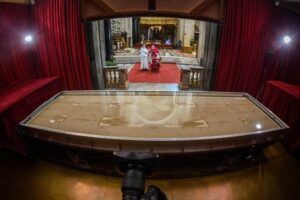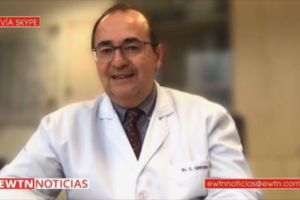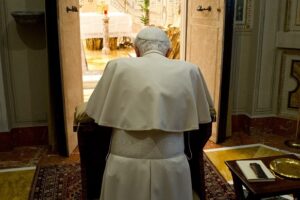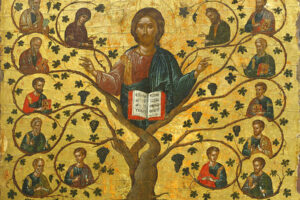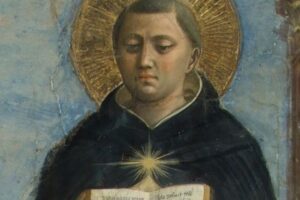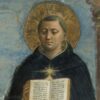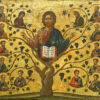The Madonna mosaic at St Peter’s
The image, over two and a half meters high, was placed there between November and December 1981 and has a story that deserves to be remembered for its intimate connection to the Pontiff beatified on May 1st.
After the assassination attempt on May 13, 1981, Vatican officials were evaluating the possibility of placing a plaque, or some visible sign, in St. Peter’s Square in the area where the Pope had been shot, in remembrance of a painful page in the history of the Church but also as testimony of divine protection.
John Paul II, convinced that the Virgin Mary had protected him on that day, immediately expressed the desire that an image of the Madonna be placed in the square.
Pope Wojtyla also revealed that the previous year someone had mentioned to him that there was something “missing” from St. Peter’s Square: amidst the statues of Christ and the apostles and saints placed throughout the semi-circle of the columns, there was no representation of the Madonna.
Archbishop Eduardo Martinez Somalo, substitute in the Secretariat of State, asked me as assessor, to contact Bishop Giovanni Fallani, President of the Permanent Commission for the Conservation of Historical and Artistic Monuments of the Holy See and Professor Carlo Pietrangeli, Director of the Vatican Museums, in order to draw up some proposals.
Two hours later, we were standing in St. Peter’s Square and Mons. Fallani pointed to a window of the Apostolic Palace where the mosaic is now placed and said, “For me, a solution which works well for the setting of this square is a mosaic placed in the travertine frame of that window up there.” He then asked what was behind that particular window. I responded that it was the room where two sisters did some typing for the Secretariat of State, but that it was a large room and had another side window
.


